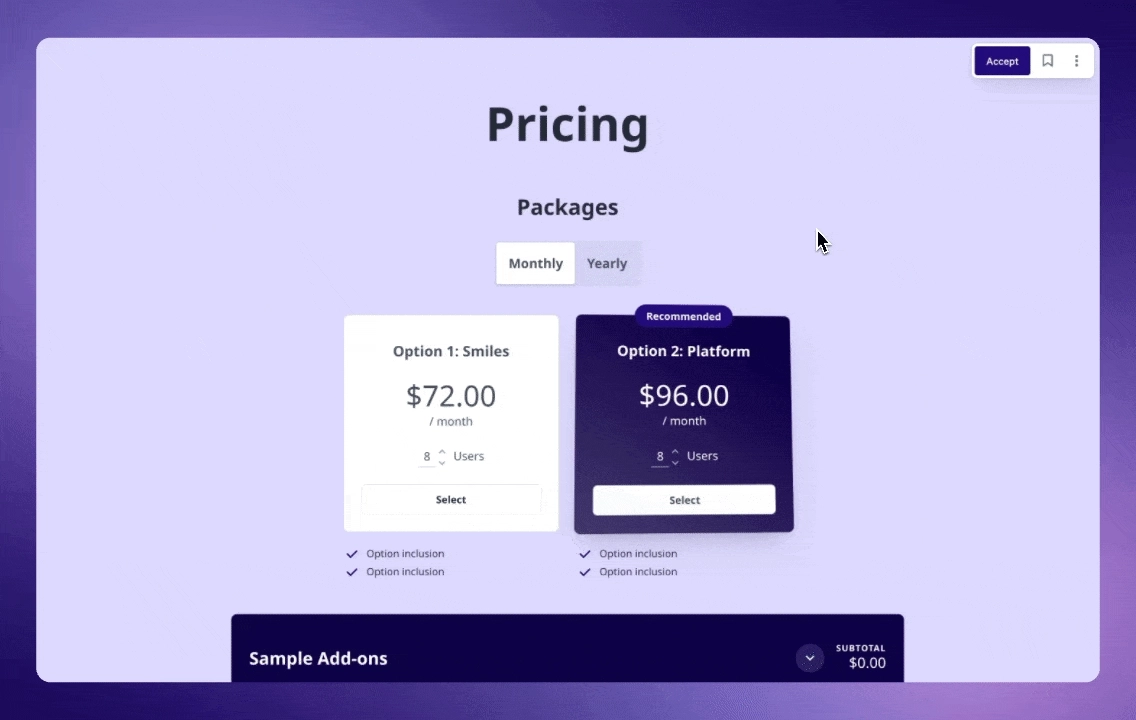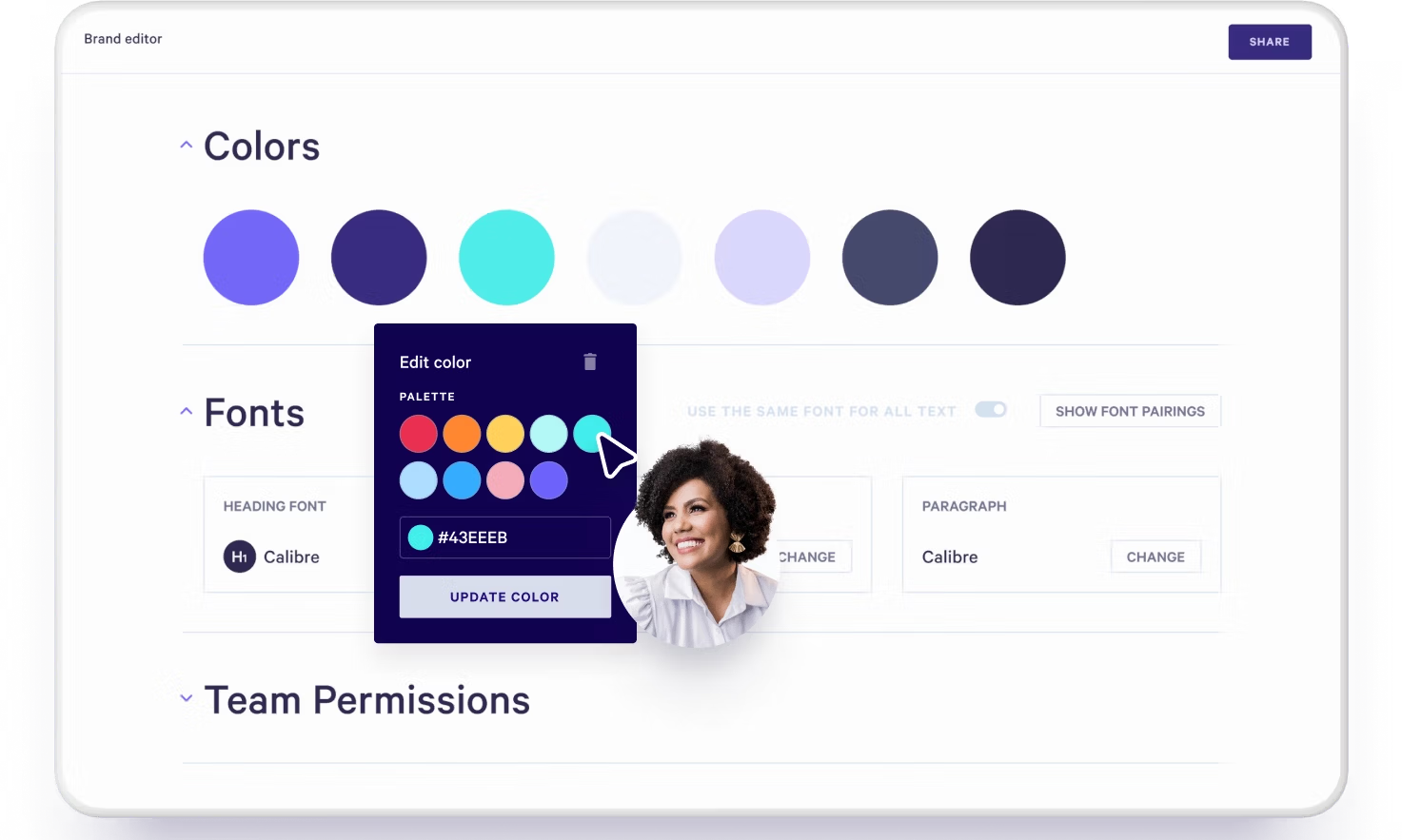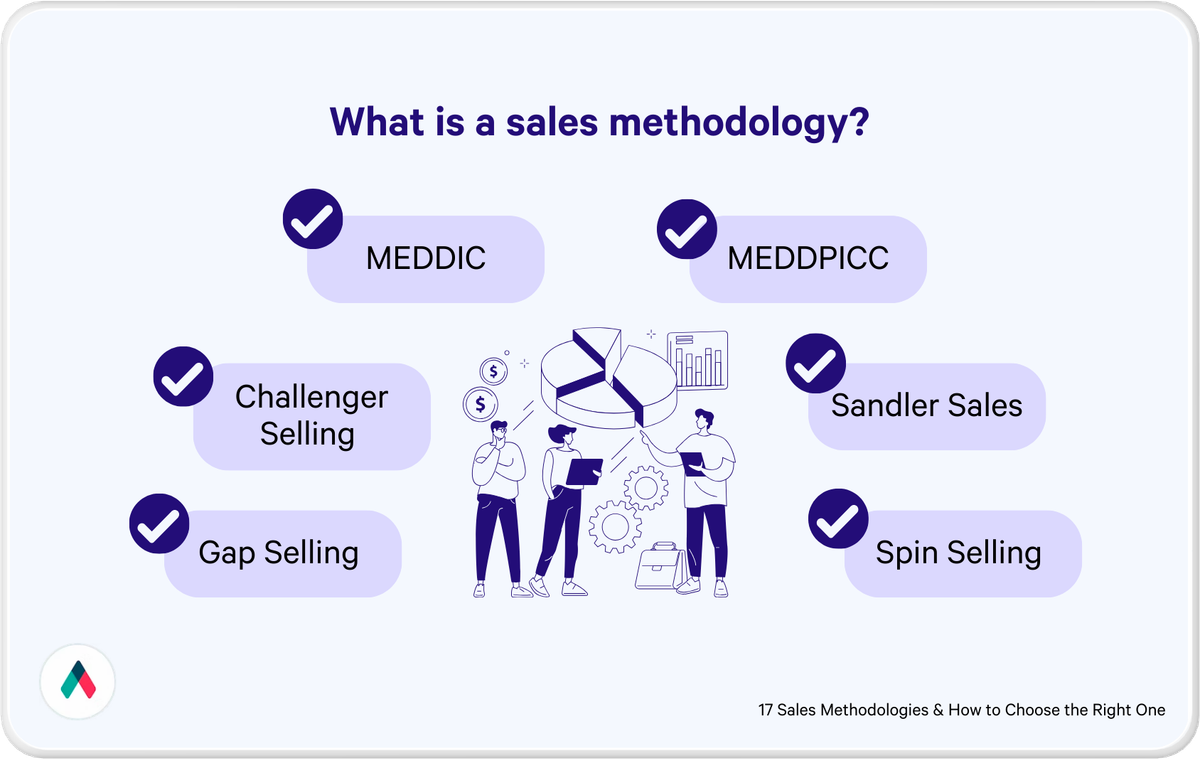Sales is like cinema: the buyer is the main character, and insight sellers are the storytellers who deliver the plot twist they never saw coming—but can’t ignore. In a noisy marketplace, where your buyers have likely read five whitepapers before taking your call, how do you cut through the clutter?
Rather than asking buyers what they need and then fulfilling that request, insight sellers lead with provocative, data-backed insights that challenge the buyer’s assumptions and reframe their priorities. They become trusted advisors—not just vendors—and in doing so, win larger deals, faster.
“You can’t handle the truth!”
—A Few Good Men
(That’s the energy insight sellers bring. Because sometimes, the truth buyers need isn’t the one they asked for.)
Let’s get insightful.
Key takeaways
- Insight sellers lead with data-backed ideas that challenge buyer assumptions, reframing problems to position themselves as trusted advisors.
- In a crowded, complex B2B landscape, insight selling cuts through the noise by offering fresh perspectives buyers haven’t already researched.
- Insight selling works best when the whole go-to-market team is aligned around a shared narrative, not just Sales.
- Tools like Qwilr help scale insight selling, turning proposals into engaging, personalized assets that drive faster, smarter deals.
What is insight selling?
Insight selling is a sales approach where the rep leads with unique, data-backed insights that reframe the customer’s understanding of their problem and introduce a new way to solve it.
Coined and popularized by Matthew Dixon and Brent Adamson in The Challenger Sale, insight selling positions the rep as a subject matter expert who educates rather than accommodates. It's about challenging the buyer's worldview and guiding them toward a new vision of success - ideally, one that only your product can fulfill.
Key traits of an insight-led approach:
- Provocation over accommodation: You don’t just listen and respond. You lead.
- Customer-specific insights: You bring data, trends, and ideas the buyer hasn’t considered.
- Perspective shifting: You reframe the buyer’s current priorities or criteria.
- Tailored, not templated: Insight selling isn’t a pitch deck. It’s a conversation that evolves based on the buyer’s vertical, maturity, and goals.
“You had me at hello.”
—Jerry Maguire
(That’s the power of the right insight - delivered at the right time.)
Insight selling vs. solution selling vs. consultative selling
How does insight selling stack up against solution and consultative selling?
| Selling Approach | Key Focus | Seller Role | Buyer Role | Risk |
|---|---|---|---|---|
Solution Selling | Match product to expressed need | Problem solver | Diagnoses their own need | Buyer misdiagnoses problem |
Consultative Selling | Deep discovery, value alignment | Trusted advisor | Explores collaboratively | Prolonged sales cycles |
Insight Selling | Reframe the need with new insights | Change agent | Learner, guided by insight | Requires credible insight |
“I’m going to make him an offer he can’t refuse.”
—The Godfather
(Insight selling isn’t coercive, but it does present a perspective so compelling, it’s hard to walk away.)
Insight selling builds on the trust of consultative selling and the problem-solving of solution selling. But it goes one step further. It assumes the buyer doesn’t always know what they need.
And in today’s complex B2B world? That’s often true.
Read next: What is Solution Selling? 2025 Sales Team Guide
Why insight selling works now more than ever
In a post-pandemic, AI-infused, budget-conscious economy (try saying that 5 times over), B2B buyers are:
- Overwhelmed with options: Tech stacks are crowded. Features are easy to copy.
- Doing research independently: 70% of the buying process happens before sales is looped in.
- Risk-averse: They want ROI, not fluff.
- Cross-functional: Buying committees now include finance, IT, procurement, and legal.
This means sellers can’t rely on great demos or long lunches to close the deal. They need to bring something the buyer hasn’t already Googled.
That’s what insight selling delivers.
“These aren’t the droids you’re looking for.”
—Star Wars
(Or are they? Insight selling is about helping your buyer realize their ‘problem’ isn’t what they thought it was.)
You don’t just compete on price or features, you compete on vision.
Read next: The Psychology of Sales: What Smart Reps Do Differently.
Insight selling in action: a tale of two proposals
Let’s say you’re selling a proposal tool like Qwilr. Two reps pitch the same mid-sized agency.
Rep A (Solution Selling): Discovers the client spends too much time formatting PDFs and chasing down signatures. They pitch Qwilr’s proposal templates and e-signature workflow. The buyer nods. Sounds fine.
Rep B (Insight Selling): Starts by sharing data: “Our research shows that proposals with embedded video and interactive pricing close 25% faster, and get 30% fewer scope change requests.”
They continue: “Most agencies think the delay is in the approval cycle. But what we see is that prospects get stuck because they don’t understand the proposal. It’s not about speed- it’s about clarity.”
Now they’ve reframed the problem: not formatting, but comprehension. And they’ve tied Qwilr’s interactive features directly to that new insight.
Which rep do you think wins the deal?

Case study: Essence of Email boosts growth with interactive proposals
Essence of Email, a boutique e-commerce email marketing agency, faced challenges with inconsistent branding across proposals, time-consuming document creation, and low engagement due to static PDFs. To overcome this, they switched to Qwilr, enabling their team to create branded, interactive proposal pages that featured embedded media and view tracking, enhancing professionalism, streamlining their workflow, and boosting client engagement.
Results:
- Achieved 76% year‑on‑year growth
- Streamlined proposal creation. No design team needed
- Higher-quality outreach, leading to better conversations
- Smooth feedback loop on live pages, leading to faster deal closes
Client quote:
“Using Qwilr, the team has created captivating success stories… These webpages are incredibly easy to put together and don’t require any in‑house design development.” — Xiaohui, Founder of Essence of Email
How they did it:
- Established an on-brand content library with company fonts, colours, and visuals
- Used password protection and analytics to focus time on high‑value prospects
- Empowered both Sales and Marketing to create success narratives as standalone web pages
- Resulted in more streamlined feedback, reduced manual revisions, and higher conversion rates via web‑based sharing

Where insight selling shows up in the sales process
You don’t need to overhaul your funnel to become an insight seller. But you do need to shift your messaging and materials.
Here’s where insight selling should appear:
1. Discovery
Insight selling doesn’t ignore discovery, but it does guide it. Instead of asking “What’s not working?” you might say:
“In working with other SaaS companies at your stage, we’ve seen that proposal bottlenecks usually come from legal and procurement delays. Is that something you’ve noticed too?”
This lets you test hypotheses and spark reflection.
2. Presentations & demos
Forget the feature parade. Show the future state.
Use stories, benchmarks, or anonymized customer data to paint a picture:
“When agencies switch to Qwilr, they often reduce their proposal-to-close time by 30%. But what’s more surprising is that they also cut revision cycles in half - because interactive pricing eliminates back-and-forth.”
3. Proposals & collateral
This is where tools like Qwilr shine.
Rather than static PDFs, you can build proposal documents that sell. Use:
- Embedded video for context and narrative
- Side-by-side benchmarking
- Dynamic ROI calculators
- Case studies with measurable outcomes
An insight-led proposal isn’t just a quote, it’s a conversation starter.

4. Objection handling
If a prospect pushes back on price, you can return to your insight:
“I totally understand. But if you’re currently sending 15 proposals a month, and our data shows you can shorten your cycle by 6 days per proposal, that’s nearly a full-time headcount saved over the year.”
Objections become opportunities to reinforce your POV.
Building insight selling into your team: a framework
Ready to go from order takers to perspective shapers? Here’s how to get started:
Mine for insights
You can’t sell insights without, well, insights. Start by collaborating with:
- Customer success: What do power users do differently?
- Marketing: What data are you sitting on? (Benchmarks, surveys, trends)
- Product: What features are underused but game-changing?
- RevOps: Where in the funnel do deals stall and why?
Package these findings into a library of insights tailored by industry or persona.
Train for conversations, not scripts
Instead of memorizing rigid scripts, sales reps should be trained for dynamic, real conversations. Earning the right to challenge a buyer requires skill, specifically, knowing how to deliver insights without sounding arrogant, how to connect those insights to the buyer’s unique context, and how to support bold claims with credible evidence like data or case studies.
Regular roleplaying is key, with a focus on practicing how to reframe the buyer’s thinking - not just pitching a product.
Dare we say… “It’s not personal, Sonny. It’s strictly business.” —The Godfather (Challenge with empathy, not ego.)
Upgrade your sales assets
Your proposals, pitch decks, and emails should reinforce your insights.
With Qwilr, you can:
- Clone winning proposals that tell a compelling story
- Embed video explainers or third-party stats
- Track buyer engagement and refine accordingly
(And let’s be honest: if your proposal looks like a Word doc, your insights won’t save it.)
Measure the right outcomes
Insight selling goes beyond traditional success metrics like win rates; it requires tracking the signals that show whether your approach is resonating. That means measuring average sales cycle length, the number of decision-makers engaged, response rates to proposals, and content engagement—such as the percentage of embedded video watched in a Qwilr page.
Since insight selling is as much about educating as it is about persuading, your metrics should reveal whether buyers are truly learning and engaging with the value you’re presenting.
Make it a company POV, not just a sales tactic
Insight selling isn’t just a technique. It’s a perspective. And like any strong point of view, it only gains traction when it’s consistent across every touchpoint.
If Sales is reframing buyer problems one way, but Marketing is telling a different story, Product is highlighting unrelated value, and Customer Success is reinforcing legacy pain points, then your insight won’t stick. It’ll feel like a clever pitch rather than a credible, company-wide perspective.
To avoid that disconnect, the entire go-to-market team needs to rally around the same core narrative. Marketing should create awareness around the insight long before the first sales call. Product should build and demo features that fulfill the insight’s promise. Customer Success should reinforce it in onboarding and use it to define success. Even Finance can support the story with cost justification models and ROI data that anchor the insight in hard numbers.
To operationalize this alignment, consider creating a lightweight internal toolkit: a shared source of truth that helps every team speak from the same script.
Your POV Enablement Kit might include:
- The core insight and how it was developed
- Role-specific messaging for Sales, Marketing, CS, and Product
- Customer quotes or data points that validate the insight
- Slides, email copy, and objection-handling examples
- ROI or cost-of-inaction models that support the business case
Insight selling is powerful, but only when everyone’s selling the same insight.
What makes a great sales insight?
Not all “insights” are created equal. Here’s a litmus test before you drop one on a prospect:
Insight Checklist
- Is it backed by data?
- Does it challenge the buyer’s status quo?
- Is it specific to their industry or role?
- Can you tie it back to a unique capability you offer?
- Will it prompt a “Hmm, we hadn’t thought of that”?
If your insight fails two or more of these, it’s probably just… an opinion.
Insight selling: The Qwilr advantage
Let’s zoom out.
You’ve taught your reps how to lead with insight. They’re challenging assumptions and earning trust.
Now what?
You need proposals that keep the momentum going. Qwilr lets you:
- Tell a story: Use dynamic content to guide buyers through your POV.
- Personalize at scale: Quickly tailor proposals by role, vertical, or insight.
- Stand out: Interactive pricing, embedded ROI calculators, and multimedia differentiate you from the pitch deck crowd.
- Track engagement: See what buyers engage with—and follow up smarter.
Qwilr also makes it easy for clients to review, accept, and sign proposals in one smooth, web-based flow. No downloads, no switching between tools. Just a seamless experience that feels as modern as your brand. With legally binding e-signatures built directly into the page, you eliminate friction and keep deals moving forward fast.
As soon as a client signs, you’ll get real-time notifications, complete with time stamps and version tracking for full visibility. And if you’re using QwilrPay, they can sign and pay on the spot, turning proposals into closed revenue without delay.
In short? Qwilr helps you scale insight selling beyond the call.
About the author

Brendan Connaughton|Head of Growth Marketing
Brendan heads up growth marketing and demand generation at Qwilr, overseeing performance marketing, SEO, and lifecycle initiatives. Brendan has been instrumental in developing go-to-market functions for a number of high-growth startups and challenger brands.



